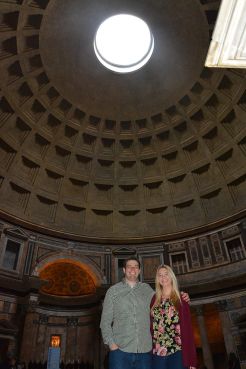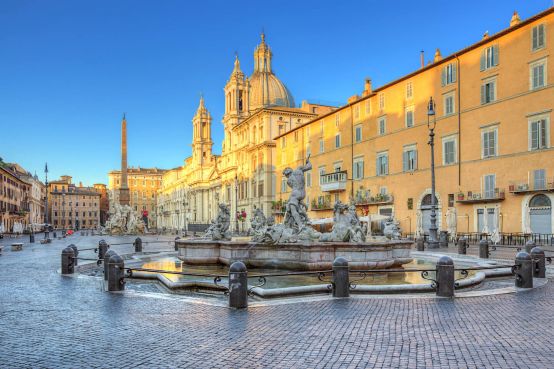The concrete expression of the triumphant Church that managed to overcome the crisis caused by the Protestant Reformation, the Baroque is the style of theatricality, wonder and amazement par excellence that emotionally involves the viewer. During the 17th Century palaces, fountains, squares and churches were created totally invading the city and giving it a new face which today, still sets it apart from the rest of the world.
The two main protagonists of this tour are Bernini and Borromini who, perhaps because of their bitter rivalry proved to be authentic geniuses. You can admire the work of Bernini at the Church of Santa Maria della Vittoria. Here, the Bernini's Ecstasy of St. Theresa in a theatrical manner captures the moment when St. Theresa of Avila heart is pierced by angel, "inflamed by the love of god. In the 18th Century, the visiting Marquis de Sade found the work too sensual and claimed it was hard to believe that Theresa was a saint.
At the church of San Carlo alle Quattro Fontane, you can admire the work of Borromini. The strange fanciful shapes of the architectural elements, as well as the continuous alternation of concave and convex lines in the decorative elements, were achieved thanks to the exclusive use of stucco. Borromini as able to create a masterpiece in a church no bigger than one of the single supporting columns of the dome of St. Peter's.
Although, the dome of St. Peter's is one of the most famous landmarks in the world, Rome itself contains a multitude of church domes set to a unique fashion. The dome of Sant'Ivo alla Sapienza, near to the Pantheon is a delightful example of the work of Borromini. The task of building the church was originally assigned to Bernini. But he felt the work too troublesome and difficult, and left the task to Borromini who created a structure as extraordinary as it was complex.
Throughout the city centre of Rome Bernini left his footprints in the form of his delightful fountains, or in his work at St. Peters where he left countless examples of his great work. Other examples of Borromini's work help confirm what an important role these two geniuses played in the evolution of the Eternal city.











